

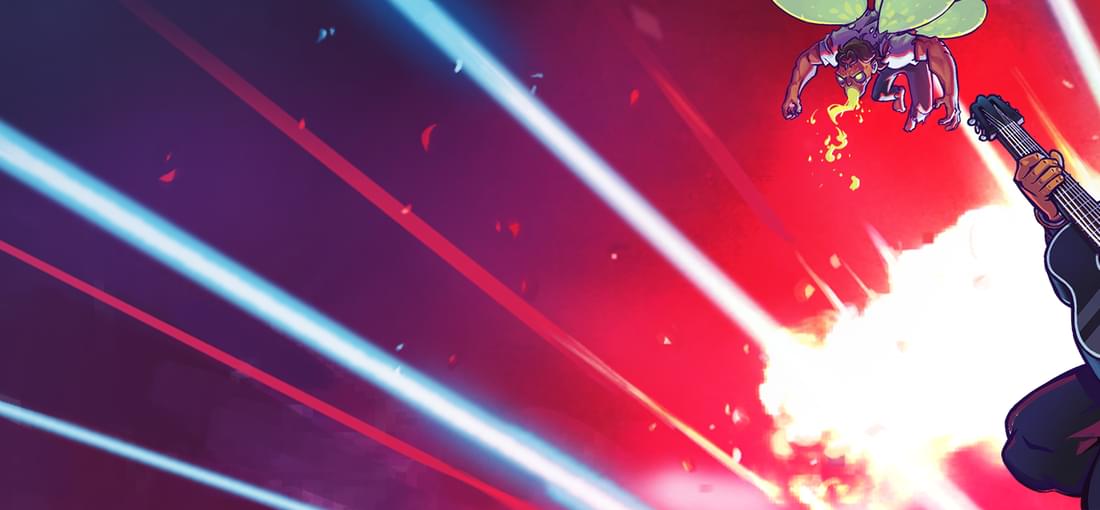
Broforce is designed with love, care, and talent. With its colorful graphics and sweet sound design, it’s a great homage to the macho action movies of old, and a very straightforward and satisfying “kill the bad guys and get to the end of the level” type of game. However, it stands apart due to its fully destructible environments: almost every piece of scenery can be blown apart, adding a tactical element to the already hectic combat. You can dig your way through levels and destroy walls to take your enemies by surprise; there are explosives everywhere, meaning that a chain reaction can easily be triggered. Getting caught in a deadly explosion or destroying too much of the terrain are common annoyances, but they don’t spoil the fun that much. The campaign is just the right length, and constantly introduces new gameplay elements and enemies. The playable “Bros”, based off characters from classic action flicks, have each their own quirks and are insanely varied in their gameplay! You constantly get to play as new randomly-chosen Bros, and their special attacks are fun to master and add a great deal of replayability to the levels. However, some are ridiculously overpowered while others feel kind of impotent, meaning that the fights (notably against bosses) can get either ridiculously easy or almost impossible depending on the Bros you were given. It mostly serves to spice things up, but can feel like an issue at times. But while Broforce is a blast (either with friends or on your own), I’m not quite sold on the last 25% or so of the campaign. It tries to spice things up by introducing new enemy types, but those can be annoying to deal with: some respawn endlessly, move in weird ways, take too much damage… While many will enjoy the challenge, I don’t think it’s as well-designed as earlier levels. Still, Broforce is a really sweet little game, and also includes a sweet level editor! It’s quite cheap and a lot of fun, so you pretty much have no excuse not to own it!
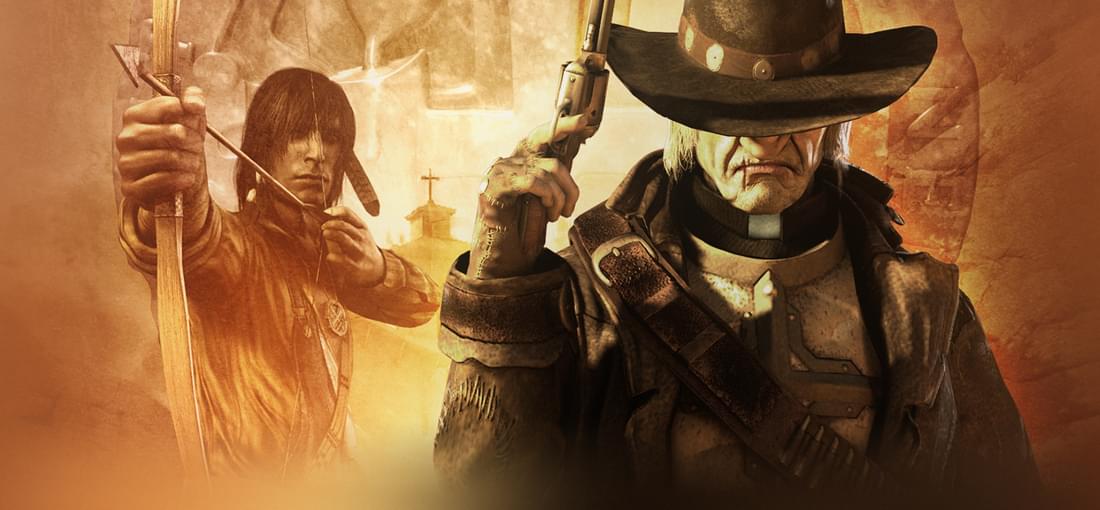
Call of Juarez is not for everyone. Its so-so gameplay will probably rebuke many players… but depending on your personal tastes, it may or may not have enough qualities to keep you hooked. The plot and overall atmosphere is a high point. Western games are still fairly uncommon, and this one nails its portrayal of a ruthless world full of gun-slinging bandits. The writing is definitely more on the tongue-in-cheek, “spaghetti” side of things, and the story is notable for being told through the separate viewpoint of two wildly different protagonist, both of whom are cool and really unique. It also has surprisingly high production values: it still looks pretty awesome after all these years, has really impressive landscapes, and the music and sound design are quite good. Alas, the gameplay is, uh… well, a mixed bag. First off, there are a lot of non-combat sections such as stealth and platforming areas, which are sometimes a breath of fresh air but will typically get on your nerves; and while the rest of the time CoJ is a pretty basic and heavily scripted shooter, its gunplay often feels kind of weak and clunky, notably when you’re forced to use weak pistols at long range. There are some innovative mechanics (standoffs, quick draws...), but their controls tend to be clumsy. Yet, despite these issues, there are quite a few moments in the game that are a blast to play through: once you get used to how the weapons handle, you will regularly get thrown in solid gunfights set in interesting places – I particularly dig the train attack scene. Because of that, and since the atmosphere is so good, the game started to grow on me after a while, even though I disliked it at first. In short, CoJ is either pretty damn fun or straight-up annoying, and thus not something I’d really recommend. But if you long for a badass cowboy story, wide open spaces and can handle a bunch of crappy mechanics, there might be something for you here. Consider it a 6.5 out of 10, buy with caution.
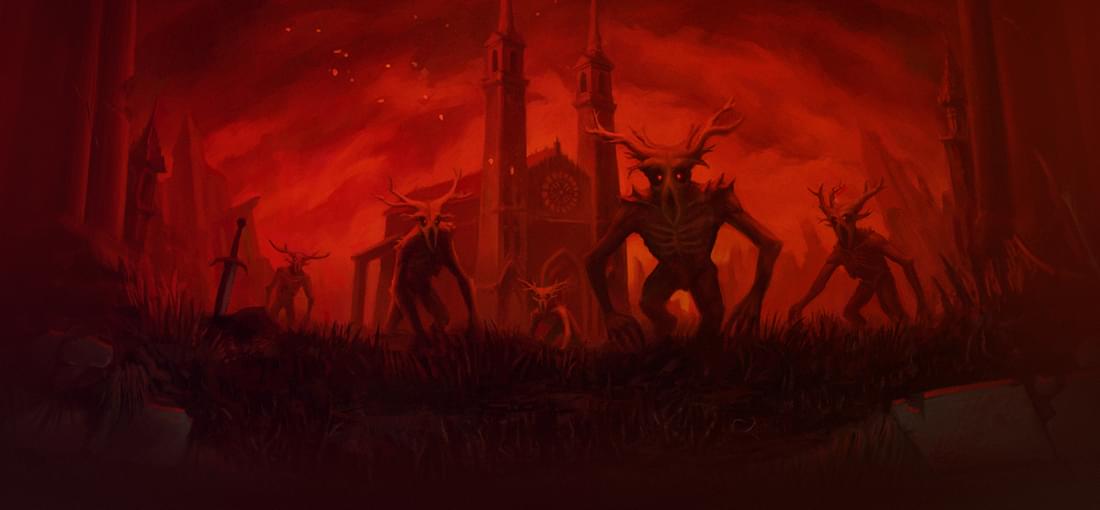
Dusk is a favorite among the “boomer shooter” crowd, and there's a good reason for that. It’s a clear and overt tribute to the FPS games of old, and it nails their overall feel and appearance with its fast movement, reloading-free gunplay, and chunky polygonal graphics. While it is strongly inspired by the likes of Quake, Blood or Redneck Rampage and even references them on occasion, it’s more than a pastiche or a tribute and has its own unique feel and atmosphere. The levels have a unique aesthetic, the soundtrack is great, the worldbuilding is pretty cool, and while the 3D graphics mimic those of a 90’s game, they still have their share of cool-looking environments and insane architectures. It also gets genuinely creepy at times! Gameplay-wise, it’s a whole lot of fun to play. It has its classic FPS arsenal and excessive speed movement: it’s extremely fun to circle-strafe and mow down the hordes of enemies thrown at you, but that’s not all. Dusk is not afraid to fully embrace its janky side and experiment with weirder mechanics, and it really shines when it lets out its more silly and modern vibe: for instance, you can use almost every object you can find as an improvised weapon, cook meat to regain health, or spin your guns for a small damage bonus. The level design has a ton of secrets to hunt down, and often lets you try out alternate paths and multiple ways to solve the issues you’re facing! Dusk, however, has some shortcomings. Three of four enemy types are annoying, notably rats and gun turrets; a few levels clearly had less efforts invested into them; and while the movement and gunplay are a ton of fun, I occasionally found them to be a bit wobbly, especially when locked in more confined spaces with multiple enemies. Still, Dusk deserves praise for being one of the first games to faithfully emulate the style of retro shooters, and… well, for being a banger. It’s not for everyone, but you will like it you’re a fan of retro gaming and over-the-top action.
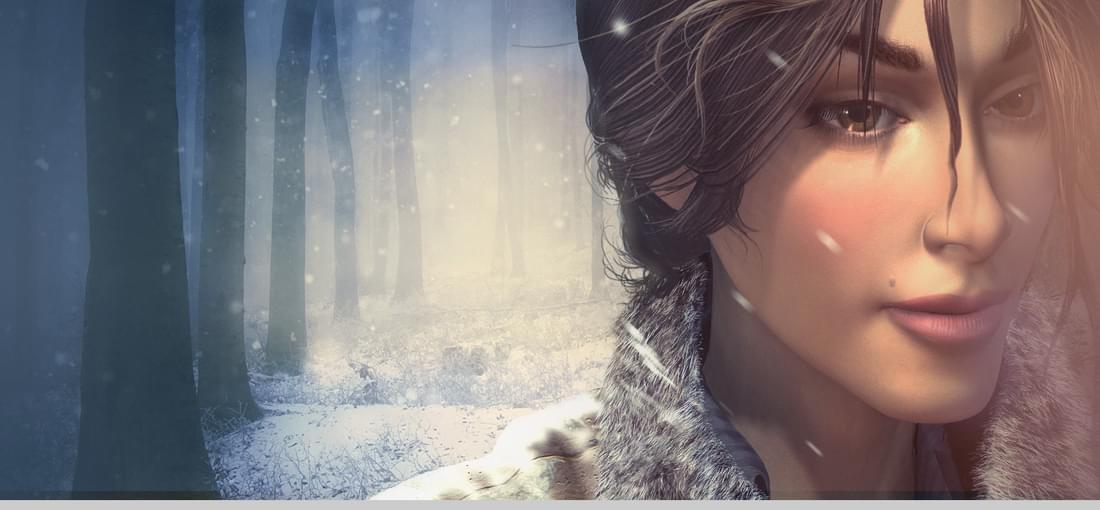
Syberia 2 is pretty good. It does not really fix the flaws of the first entry of the series, but at least it keeps building on its strengths. The story, which picks up right where the first game stopped, is more focused on developing Kate Walker as a character. While the gameplay is still fairly slow-paced and puzzle-focused, there is a real sense of urgency and suspense to the plot; the adventure feels much more eventful, action-packed and exciting. It's pretty clear that the game was designed and written by a Belgian comic artist, and if you like old-school “bandes dessinées” in the style of Tintin, you'll definitely feel at home here. The atmosphere is less melancholic this time around, but it's still a great game when it comes to mood. Visually, it looks even better than Syberia 1, with even more detailed backgrounds, better character models and animations, a higher framerate... And of course, the character and set designs are still unique and awesome. Some minor but welcome changes have also been made to the UI. Sadly, the game is still locked at a 800x600 resolution, but it can apparently be fixed with a little tweaking. Gameplay-wise, it's mostly more of the same: but while Syberia 2 starts off easier than its predecessor, with puzzles that seem to make more logical sense than in the previous adventure, that does not really last. After you leave the town of Romansburg, pixel-hunting and enigmas that rely on trial and error are back. In fact, the puzzles here are arguably more twisted and nonsensical than in the first game: even with the help of a walkthrough, the solutions often appear to be arbitrary and counterintuitive. There's nothing you can't figure out yourself, but this kind of game design can be hard to forgive in a 2004 game. Overall, while it has its flaws and can be at times more annoying than the first game, Syberia 2 does not feel like a rehash, manages to be a solid continuation of the storyline, and brings it to a satisfying conclusion.
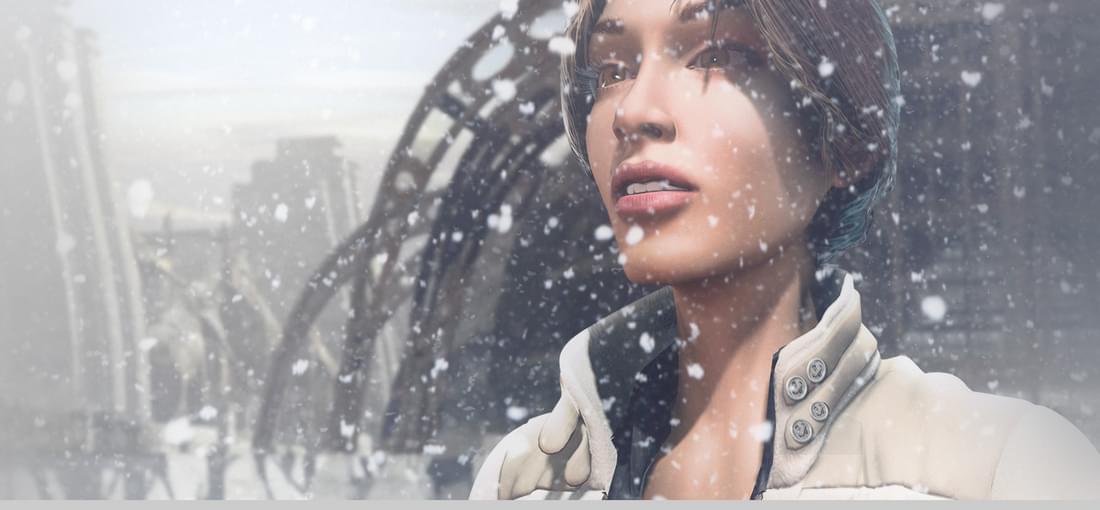
Let's start with my biggest issue with Syberia: while its puzzle-solving is not the most esoteric ever seen in a point-and-click game, it occasionally relies on finding “blink and you'll miss them” details and clues. Some problems are more easily solved through lucky guesses rather than logical thinking, and it's not uncommon to lose track of your objectives and wander aimlessly because you failed to notice a pathway or an item lying around. In short, Syberia probably isn't a very good pick if you're unfamiliar with the PnC genre. You also tend to move slowly around the world, which contributes to the contemplative mood of the game but can be annoying (even if you can run by double-clicking). Despite its frustrations, Syberia has many redeeming features. It does a really great job when it comes to atmosphere, worldbuilding and storytelling. On a technical and artistic level, all backgrounds are beautifully rendered (even if the resolution is low even by 2002 standards), and the music is great. The world and tone feel pretty different from what you would expect from, say, an American or Japanese game: it has a unique steampunk aesthetic which really make it stand apart. It has a surprisingly compelling mood, as it is very melancholic in its visuals, in its music, but also in its plot. The story takes place in once-prominent cities that are slowly decaying, and involves a lot of old characters who have powerlessly witnessed the end of their golden days: it deals heavily with themes such as nostalgia, the death of the “good old times”, and the toll technological progress can take on society. It's not something you'd play to cheer you up, but it is still light-hearted and has a lot of humor. My issue is that the ending is kind of sudden and pretty much forces you to play the sequel. So, while Syberia won't resonate with everyone, has its flaws and is a bit overpriced for such an old game, it's memorable in many regards and will likely satisfy fans of the genre.
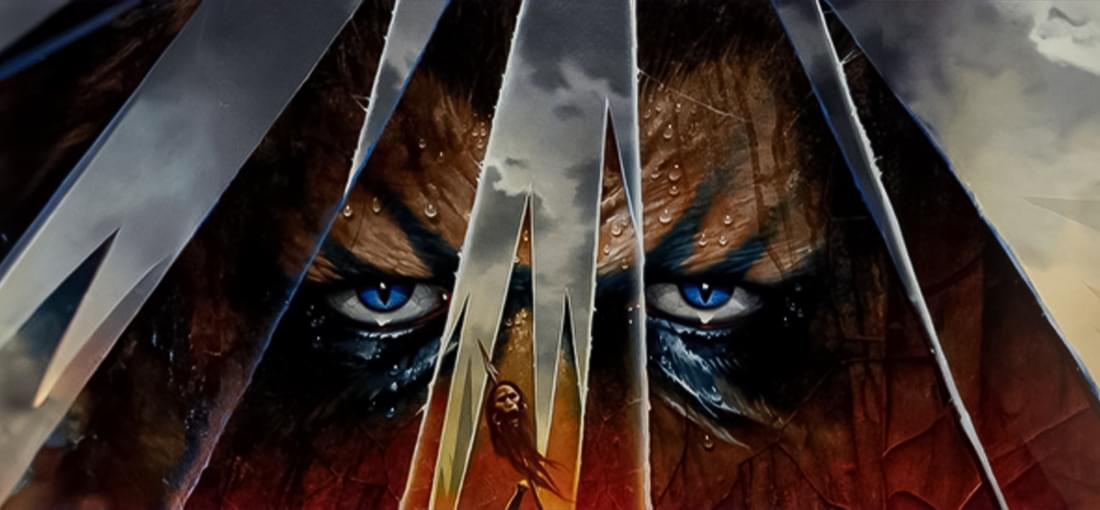
Blood Omen is a fairly standard hack'n'slash with big weapons, limited-use items and spells, as well as life and mana meters to keep a look upon. The gameplay is deliberately slow-paced and rigid, and while this is not something I'd want in a more recent game, it's still mostly fun, notably because BO:LoK really delivers when it comes to the vampiric powers and maleficent spells you get to use. You swing your sword, suck blood, transform into monstrous creatures, have your enemies explode into blood and guts... It's even more satisfying when you consider this was one of the first games to let you play as a vampire! Speaking of vampire stuff, BO:LoK is... dark. Not just because the game world is inhospitable, but also because Kain is a full-on villain protagonist, a murderous monster who slaughters as many townspeople as he does ghouls - and boy, does the game revel in it! While the plot is not as complex and the language not as elevated as it would be in the sequels (Amy Hennig was not yet involved in the writing), it's enticing and has some great voice acting. Graphically, it does not look particularly great, but still manages to have a uniquely gothic and grim atmosphere. To me, that's the main appeal of the game: its dedication to edginess and worldbuilding, helped by its passionate writing. It can be quite challenging, and alas, frustrating in some regards. The level design is great but relies heavily on environmental traps, and the enemies get increasingly strong and annoying. In some sections, they will relentlessly push you into spike traps, which would be okay if save points and opportunities to heal yourself were more frequent! I would thus not recommend it to anyone, but if a top-down hack'n'slash where you play as the villain sounds fun to you, and you don't mind playing a PS1 game with some outdated and unfair design, well... give Blood Omen a shot. It's a fun nostalgic romp, and the solid first entry of one of the best-written game series of all time!
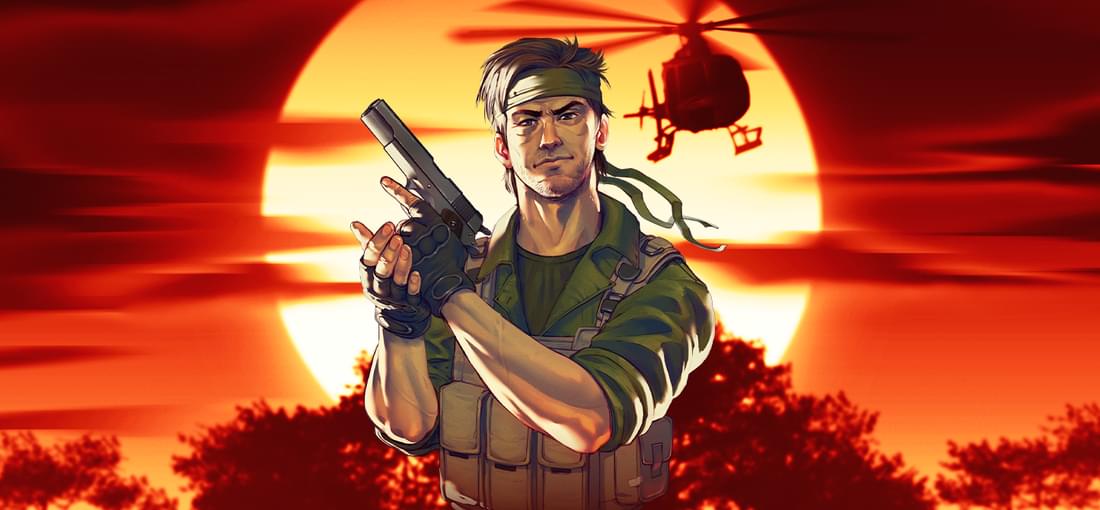
I almost regret typing this review, because it might raise expectations too high, but I had such a great time with UnMetal that I feel compelled to gush about it. It is clearly strongly inspired by the Metal Gear series, but somehow manages to not feel too derivative and have its own identity: it's more of a pastiche or an affectionate tribute than a parody... which does not make it any less hilarious! In fact, I think no other game before had managed to make me laugh so consistently! The plot and storytelling are surprisingly good too: it is framed as told by an unreliable narrator, whose shoddy recollection of events affect the gameplay and level design in really clever, almost experimental ways! The game constantly surprised me with the strange turns it took. In typical Metal Gear fashion, it has a great sense of detail and is fully committed to its weirdness, and small interactions with items and the environment often result in unexpected (but somewhat logical) outcomes. It is also not just a succession of jokes, but a fully realized stealth adventure, which constantly renews itself thanks to solid mechanics and really cool level design that regularly brings new things on the table. Some parts, like the boss fights, are particularly well-designed and challenging. Hell, it even has a leveling system, it did not have to try this hard! I have some nitpicks though. You tend to take heavy damage from everything, the healing mechanic is kind of weird, and the controls can be clunky: I often felt that the margin of error during combat was too thin – but that's probably just me needing to "git gud". More aggravating: I found the maze section at the end of the game to be obnoxious and poorly designed. In short: yeah, you should pick UnMetal up. It is insanely fun, extremely funny, and it should be noted that it is miraculously well-optimized and runs fine on my ages-old, low-end laptop. I don't think it made much of a splash when it was released, which is a shame...

While it is somewhat forgotten, Second Sight is a game with many qualities. For starters, its production values: the character models, designs and animations are really cool and unique (imagine a Pixar movie if the animators weren't properly medicated), and the visuals, music and voice acting are pretty good overall. The story, which is told in a non-linear fashion, is engaging and well-written: it's rather mature, but despite its dark and unsettling elements, it does not really revel in its own edginess. It's an infiltration game where you spend most of your time avoiding enemies or neutralizing them before they can sound the alarm, the twist being that you get to use powerful psychic powers for stealth, combat and puzzle solving – so basically, it's Metal Gear Solid, but you play as Psycho Mantis! These powers are creatively designed and find various uses throughout the campaign, and there is often a non-lethal way to deal with the situations you're presented with (even though you won't get a bad ending for killing dozens of minimum wage security guards). The level design is slightly inconsistent but solid overall, and for the most part, sneaking though these facilities with the help of the titular power of the “second sight” is a lot of fun!... Except for the combat, which is kind of bad. Perhaps because it was designed with controllers in mind, the gunplay revolves around a mechanic where you have to both lock on to enemies and move the cursor around to target them... And if that's not weird and unsatisfying enough (why can't I just use the mouse to aim?!), the autolock system barely works properly, or at least is really cumbersome to use, often targeting the last thing you'd want to shoot! It's a shame, since the gameplay is otherwise totally decent and functional! If you can get past that, Second Sight is good fun and quite memorable in some regards. I would not call it a gem, but it's a fine example of how unique and creative mid-2000s games used to be!
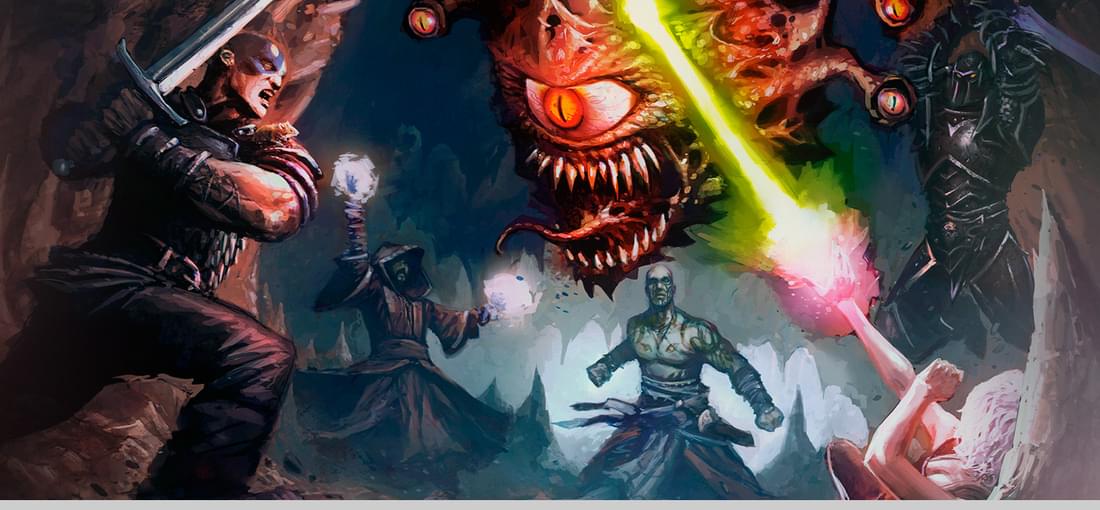
Despite not being set in the city that gives it its name, Baldur's Gate II is a huge step up from the first game... which was already pretty good! While BG1 was a mostly linear and predictable succession of short fetch quests and combat encounters, its sequel is more elaborate in its storytelling. You're constantly presented with complex situations that not only do you often get to solve in different manners, but also involve memorable characters, deep lore, well-written dialog and amazing set pieces. Overall, this game a lot more lively and memorable than its predecessor: the places you visit and the situations you're involved in are stranger and more creative, and your companions are more fleshed out and will often talk to you directly and give their thoughts during conversations – sadly, they only level up when by your side, so you'll want to stick to a small selection of them for most of the game to have more competent allies... It's still pretty solid gameplay-wise. The battles are strategic, and you have even more spells and items to play with. The difficulty is what you'd expect from an actual DnD campaign with a less-than-forgiving GM: it's more “dungeon-crawly” than BG1, and the game often pits you against groups of tough enemies, expecting you to be fully shielded against their strengths and aware of their weaknesses. I'm not a fan of it personally, but I'm sure a lot of people out there wouldn't have it any other way... This version still carries some flaws of the previous “enhanced edition” and does not fix as much problems as it should, but at least the original cutscenes are there, and the new quests and characters are integrated more organically. In short: this is one of the best game of its era, it fully realizes the potential of the saga, and it's a classic adventure that has aged fairly well. If Baldur's Gate felt like a generic fantasy RPG to you, then you will probably find its sequel a lot more interesting. Pick it up without second thoughts.
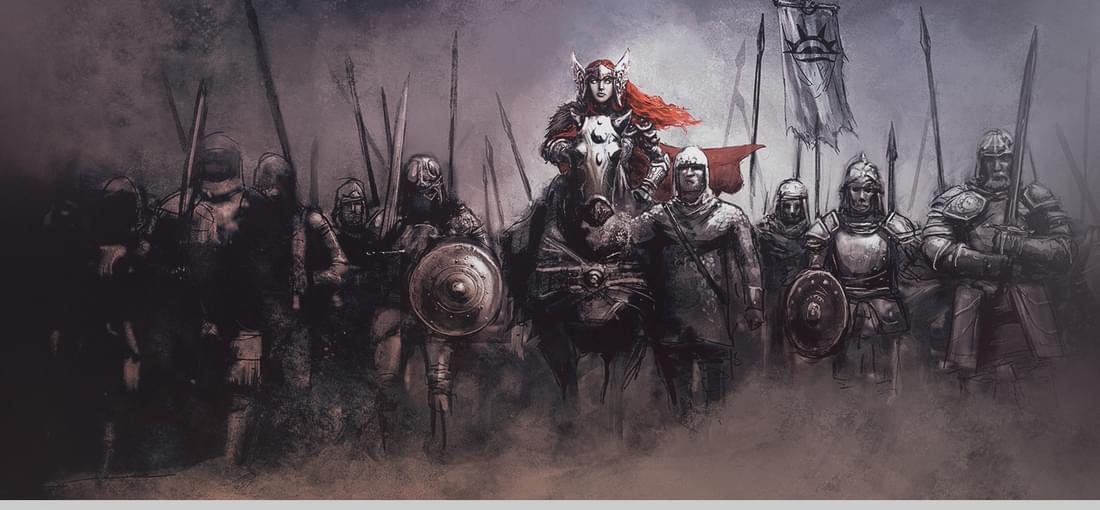
As expected, this “midquel” released 17 years after the original Baldur's Gate is lackluster in some regards. It feels fanficy, kind of barges into the established canon, and it is difficult to swallow that all the epic hijinx the characters get into happened right between BG1 and 2; in fact, the only real ties to Shadows of Amn are shoehorned in at the very last minute! But if you can get past this, it's actually quite enjoyable. The writing is nothing earth-shattering really, but let's be honest here, BG1 also was a fairly standard fantasy story: this expansion is at least on par with it, and even exceeds it in some regards! It is a badass tale about traveling through the country to take part in an epic battle, and I'm all for it. Many of the quests present you with interesting and subtle situations, and several characters are non-conventional, likable or memorable - notably the main antagonist Caelar Argent, who puts a neat twist on the “loyal good” alignment! Overall, a lot of efforts have clearly been put into this. Some original voice actors are back, and as for the atmosphere... BG always was a great-looking game, but the backgrounds here are straight up gorgeous (to the point where their level of detail can be jarring!), and the new soundtrack is fittingly beautiful and epic. The gameplay is mostly more of the same... It has more dungeon crawling than the original campaign, so your mileage may vary on that. The level design is solid, and while there are a bunch of challenging fights, rarely do they felt cheap or unfair to me. However, it is very linear and has several points of no return: make sure to complete every quest before doing anything that might advance the story! So yeah, SoD falls into a lot of predictable traps, you can skip it without missing much... but it's ambitious, fun to play, the writing is okay, and clearly, a lot of love was put into it. Maybe it would have worked better as a standalone story, but overall, it's worth a playthrough!